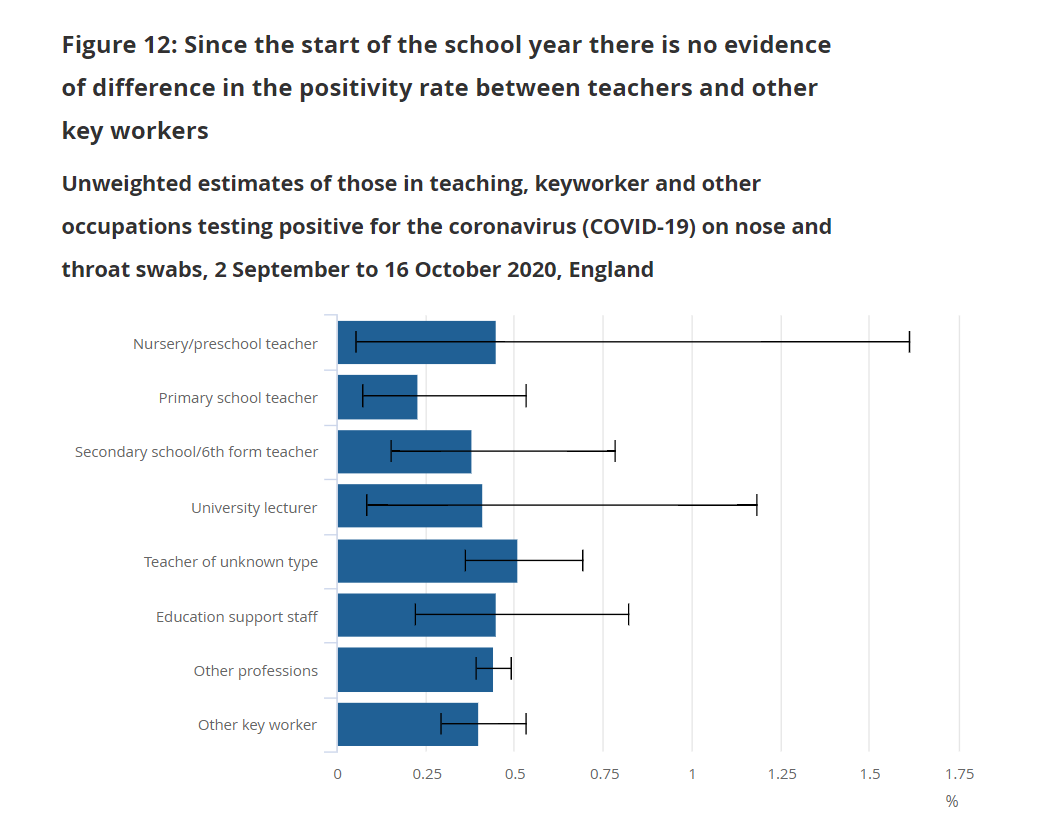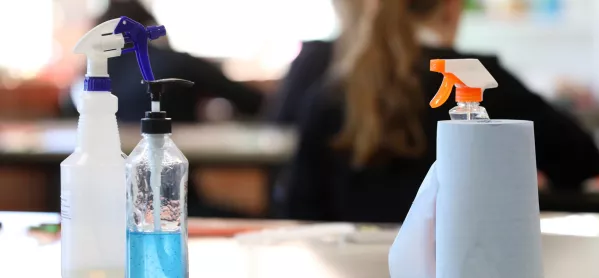School support staff including cleaners and cooks are more likely to test positive for coronavirus than teachers and teaching assistants, new data shows.
And secondary and sixth form teachers are more likely to contract the virus than primary teachers, according to analysis published today by the Office for National Statistics (ONS).
Since the start of the school year there is “no evidence of difference in the positivity rate between teachers and other key workers”, the ONS found.
But its analysis shows that secondary teachers have a similar level of risk to frontline healthcare workers.
Research: Schools have ‘limited role’ in spreading Covid
Coronavirus: Schools not ‘high-risk’ workplaces after all
Last week: ‘Steep’ rise in Covid among secondary school students
The data gives unweighted estimates of those in teaching occupations testing positive for Covid-19 based on nose and throat swabs in England, from 2 September to 16 October. Teaching assistants are included in the teacher categories.
It shows that 0.38 per cent of secondary and sixth form teachers tested positive during that time frame, compared to 0.23 per cent of primary teachers.
Meanwhile, the “other key worker” category was shown to have a positivity rate of 0.4 per cent. This includes “patient-facing and non-patient facing healthcare workers”.

The group at the highest risk (0.51 per cent) was “teacher of unknown type”. Tes has asked the ONS to clarify who is included in this category.
This was followed by “education support staff”, classified as those who work in a school or university but are not teachers (0.45 per cent) and nursery/preschool teachers (0.45 per cent).
For the purposes of this data, “other key workers” include resident-facing care home workers, patient-facing and non-patient facing healthcare workers, and protective service occupations.
The data refers to infections reported in the community, meaning private households. It excludes those reported in hospitals, care homes and/or other institutional settings.

